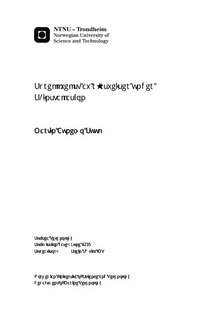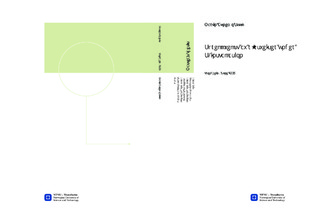| dc.contributor.advisor | Sævik, Svein | nb_NO |
| dc.contributor.author | Suul, Martin Aunemo | nb_NO |
| dc.date.accessioned | 2014-12-19T12:21:03Z | |
| dc.date.available | 2014-12-19T12:21:03Z | |
| dc.date.created | 2013-09-09 | nb_NO |
| dc.date.issued | 2013 | nb_NO |
| dc.identifier | 646740 | nb_NO |
| dc.identifier | ntnudaim:9522 | nb_NO |
| dc.identifier.uri | http://hdl.handle.net/11250/240892 | |
| dc.description.abstract | Sub-sea pipelines represent the most cost effective way of transporting oil & gas from the sub-sea field to the market. S-lay is the dominant installation method due to the horizontal firing line enabling several welding stations and efficient pipe string production. For S-lay, a stinger is used to support the pipe until it is lowered into the sea. For this method, pipeline installation is limited by the weather window and primarily due to the motions induced at the stinger tip by 1st order wave forces on the vessel. These motions will cause the pipeline to accumulate fatigue damage. This is especially the case when the lay vessel is forced to wait for whatever reason. The pipe will then have to be abandoned to avoid too much damage on the pipeline. The guideline for the allowed damage is no more than 10% of the total fatigue life, for the installation phase. This thesis will focus on the fatigue crack growth of the weld at the stinger tip section. And calculate the period of time it takes for the pipeline to reach the allowed damage criterion.The analysis and calculations presented in this thesis will be based on the computer codes SIMLA and LINKpipe. A brief introduction to these codes will be presented. SIMLA will simulate the sea state and the vessel motion, to produce the cyclic bending stresses. These stresses are imported into LINKpipe, which will perform the fatigue calculations.The sea states chosen for the analyses, were chosen based on the JONSWAP spectrum for the HS chosen. The periods were chosen to give a wide view of how the fatigue would develop as the period changedThe conclusion drawn from the results are that the fatigue life consumption is closely related to the RAO of the vessel. The method presented gives a good basis for the fatigue calculation of a pipeline being installed. The shortest time to failure was seen in the case of the 13 seconds period. This is consistent to the RAO of the vessel. The probability of a sea state of HS 2.5 and TP 13 seconds to be present is however quite small given the JONSWAP spectrum for these parameters | nb_NO |
| dc.language | eng | nb_NO |
| dc.publisher | Institutt for marin teknikk | nb_NO |
| dc.title | Sprekkvekst av rørsveiser under S-installasjon | nb_NO |
| dc.type | Master thesis | nb_NO |
| dc.source.pagenumber | 92 | nb_NO |
| dc.contributor.department | Norges teknisk-naturvitenskapelige universitet, Fakultet for ingeniørvitenskap og teknologi, Institutt for produksjons- og kvalitetsteknikk | nb_NO |

